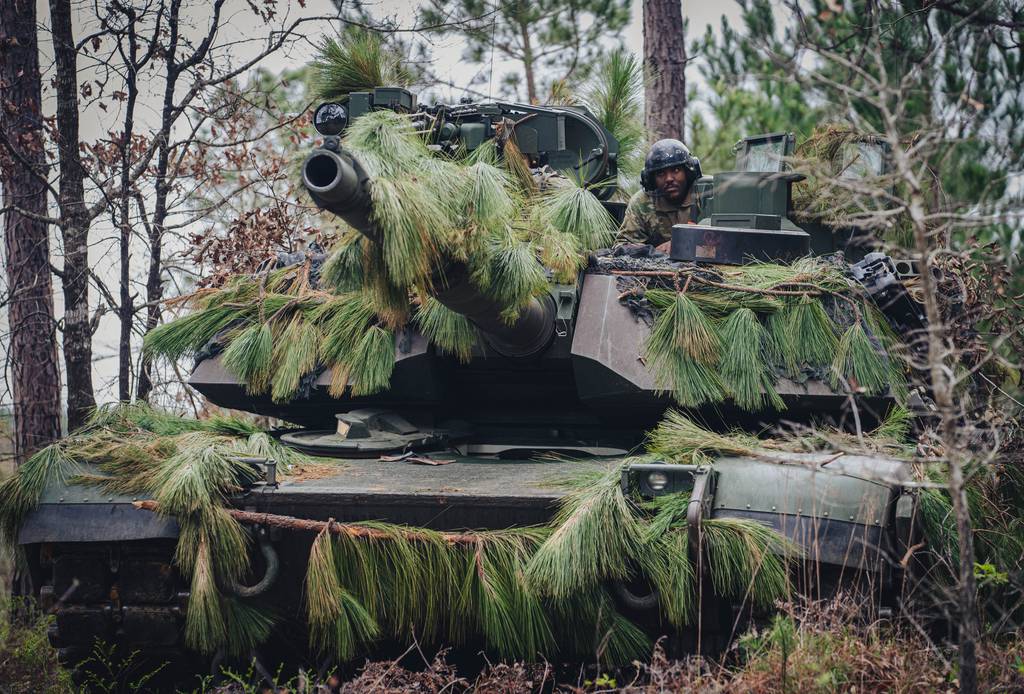
The U.S. Army awarded the manufacturer of Abrams tanks a contract this month to begin the preliminary design of its new tank variant expected to be lighter and feature high-tech capabilities so it’s more survivable in battle, the service’s head of combat vehicle modernization told Defense News.
The contract allows the Army to work closely with General Dynamics Land Systems on shaping requirements for the new M1E3 Abrams tank. The hope, according to Brig. Gen. Geoffrey Norman, is to be able to bring the new variant into the force at a similar timeline to the M30 Mechanized Infantry Combat Vehicle, which is under development.
“I think that there would be real goodness for the Army if M30 combat vehicles and M1E3 tanks could be fielded simultaneously to an [armored brigade combat team],” Norman said. “I think the Army senior leaders are going to push us to try to align those schedules, and whether that can be done is an open question right now.”
Norman said factors like technology maturation budgets will likely dictate whether that is achievable.
The Army is running a competition between two American Rheinmetall Vehicles and General Dynamics Land Systems to build the XM30 vehicle that will replace the Bradley infantry fighting vehicle. The service plans to select a winner in late fiscal 2027 or early fiscal 2028, Norman said.
The schedule for the M1E3′s preliminary design and what follows is under review within the Army’s acquisition branch, Norman said. In the meantime, the Army and GDLS will begin working through what the service wants in and can achieve with a new Abrams variant. A firmer timeline will likely take shape by the fall, he added.
The Army last fall decided to scrap its upgrade plans for the Abrams tank and instead pursue a more significant modernization effort to increase the tank’s mobility and survivability on the battlefield. As part of the decision, the Army ended its M1A2 System Enhancement Package version 4 program.
The M1E3 “from a requirement standpoint is an engineering change proposal,” Norman said, but with “a different design approach to meeting existing requirements. It’s going to be a very differently configured Abrams than what we currently have.”
Over the next 18 months, Norman said the Army will work through a series of technology maturation efforts to include autoloader capabilities, aides “to enable a crew to operate fully buttoned up [inside the tank],” alternate power trains, and active protection systems.
“Those are the types of things where different systems are being competed to pick the best of the breed that then will be integrated into an [engineering change proposal] prototype,” he added.
The Army plans to bring the weight of Abrams under 60 tons. The current variant is roughly 73 tons, according to Norman.
“That might be a little aggressive, but we’re pretty ambitious,” he said of the goal. “In order to do that, we anticipate having to change the crew configuration, potentially looking at opportunities to go to a remote turret or an optionally manned turret in order to save the space under armor.”
Power trains that include hybrid capability will also undergo examiniation in order to achieve both reduced fuel consumption as well as the desirable silent watch and silent drive capabilities to better avoid detection. The power train must still be able to reach high dash speeds, Norman noted.
The M1E3 will also have an integrated active protection system “that’s part and parcel to the vehicle survivability, profile and design. That’s one of the things that we know absolutely will be integral to the program,” Norman said.
Jen Judson is an award-winning journalist covering land warfare for Defense News. She has also worked for Politico and Inside Defense. She holds a Master of Science degree in journalism from Boston University and a Bachelor of Arts degree from Kenyon College.
- SEO Powered Content & PR Distribution. Get Amplified Today.
- PlatoData.Network Vertical Generative Ai. Empower Yourself. Access Here.
- PlatoAiStream. Web3 Intelligence. Knowledge Amplified. Access Here.
- PlatoESG. Carbon, CleanTech, Energy, Environment, Solar, Waste Management. Access Here.
- PlatoHealth. Biotech and Clinical Trials Intelligence. Access Here.
- Source: https://www.defensenews.com/land/2024/05/31/a-lighter-high-tech-abrams-tank-is-taking-shape/



